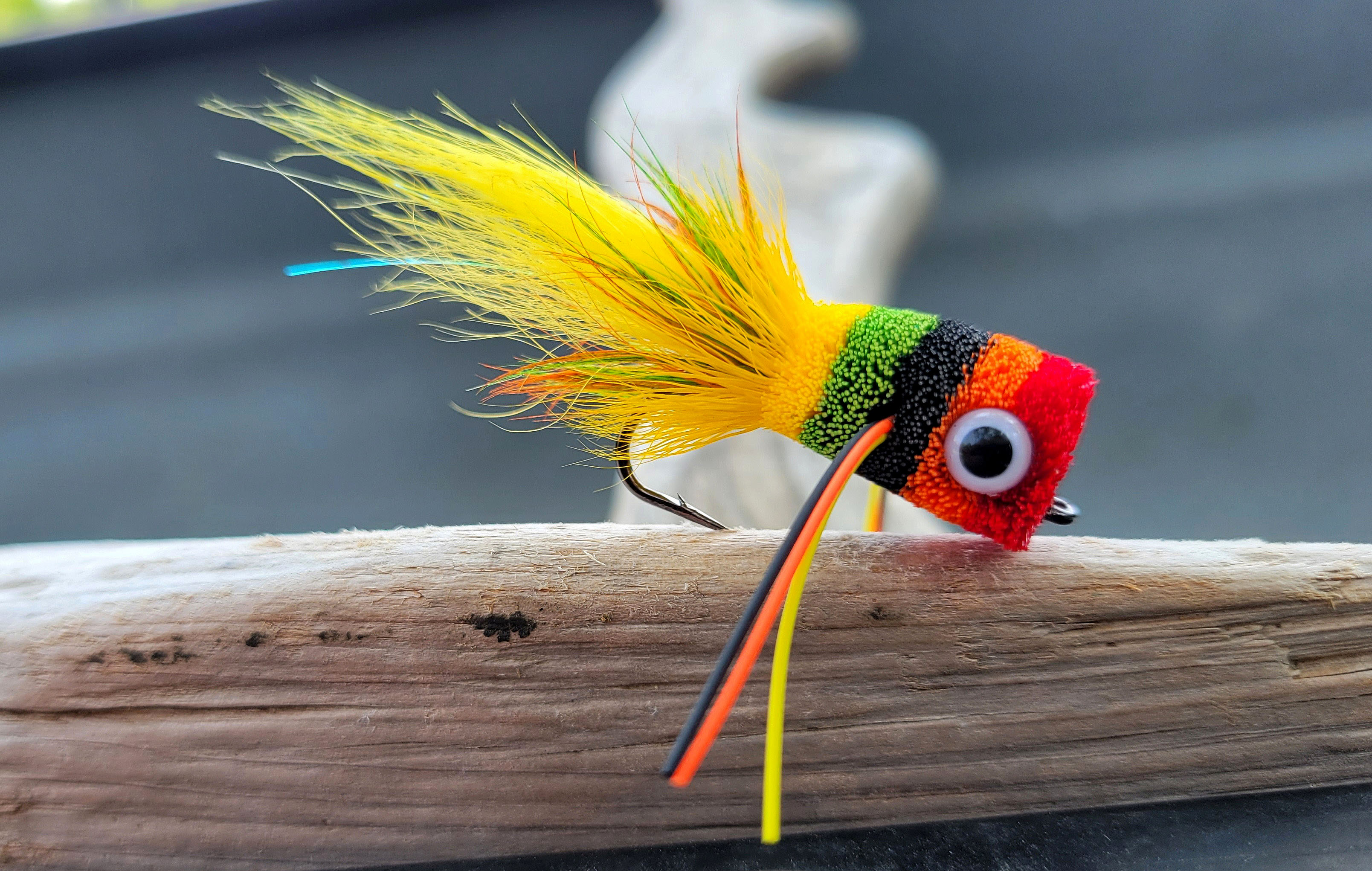Surface flies made of tightly-spun deer belly hair have been catching bass for more than a century. If your grandpa used the long rod at the lake in the 1940s, 50s, or 60s, there’s a good chance he had a fat hair bug chugging away while he pulled on his favorite pipe. This style of fly used to be widely leaned upon, but over time, balsa wood and foam surface flies overtook the market. And it makes sense because they’re far cheaper and easier to produce. Many people who still religiously cast hair bugs do it for the nostalgia, but they also understand that hair has many fish-catching benefits that modern materials cannot offer. The trick, however, is choosing the right hair bug.
Sure, you can get them online and at fly shops for reasonable prices, but it’s rare to find a mass-produced spun hair fly that performs as well and lasts as long as a custom pattern made by a passionate, precise tyer. Brandon Bailes is one of those tyers. He’s renowned for his ability to spin intricate, detailed hair bugs that are as much art pieces as functional. Bailes, of course, prefers that you fish them, and there’s nobody better to explain how to get these old-school bugs drawing up big summer bass.
You can listen to the latest episode of the Quick Strike Podcast on “>Apple, Spotify, or wherever you get your podcasts.
Hair Dos and Don’ts
To understand hair bugs, you must know the basics of how good hair bugs are made. Deer belly hair is the key ingredient, though body hair can also be used. More common bucktail, however, should never be used; it’s not as thick, buoyant, and able to trap air. The more tightly the hair is packed on the hook shank, the stronger the fly will be and the better it will float. However, many companies that mass-produced hair bugs use thinner bucktail or pack the fly too sparsely. If each wrap isn’t super tight, the hair will also spin. That’s not to say less expensive hair bugs won’t catch, but a properly-tied bug will outperform them.
“The belly hair itself makes one of these flies special,” says Bailes. “When a fish clamps down on it, I’m convinced that the fly just feels more natural in its mouth than foam or balsa. I think they hang on a bit longer.”
Bailes also points out that a lot of hair bugs — even poppers — should actually ride very low on the surface. As they absorb water, they’ll often settle into the film with more fly below the waterline than above. This creates a different view from below than topwater flies that ride high and produces a unique wake and sound. Achieving this, though, requires well-packed hair — if there’s not enough or it’s the wrong kind, the fly will eventually just sink.
Less Is So Much More
Most anglers cast a popper and want to make it, well … pop. We’re taught to believe that more sound and surface commotion is better, as it’ll call in the fish. That’s not wrong for many species and scenarios, but when fishing a hair bug for summer bass, the less you do the more you’ll catch. Hair bugs, by design, are made to hook fish with subtlety.
“There are instances where you want to make a lot of noise with a bug, but I usually only do that when the water is very high or dirty,” Bailes says. “But under normal conditions I tell people to make the cast, let all the ripples dissipate, then retrieve it so slowly that all you’re really doing is letting the rubber legs or tail move.”
This quiet approach is especially critical in clear water, which is often what you find during the dog days of summer. Overworking a surface fly can actually spook fish, but a bug just quivering in place like an injured frog or large terrestrial insect that wound up in the drink will make the play with fish in warm summer water that can often make them a bit sluggish in the middle of the day.
Stick with Glass
Hair bugs are bulky and air resistant. Get them soaked and they can be kind of heavy, too. You’re not going to easily throw them on standard 9-foot, 5-weight fly rod. Seven- and 8-weight rods get the job done better, but Bailes is also an advocate of using fiberglass rods for hair bugs. Glass was the norm for decades before graphite took over, and they’ve become trendy again recently. Much like the bugs, however, fiberglass fly rods offer more than a nostalgic twist to a day at the pond.
“Fiberglass rods are softer than graphite, so they’re great shock absorbers,” says Bailes. “That action also makes them like a springboard. They’ll load deep into the butt section, which really helps send a hair bug far and accurately without a lot of extra casting effort.”
Read Next: How to Book a Guided Fishing Trip, Without Getting Ripped Off
If you’re used to a fast-action graphite rod, fiberglass can take some adjustment. It forces you to slow down your stroke, but because it has a much softer action, it’ll also make a 3-pound bass feel like a 6-pounder after it snatches that bug out of the pads. If you’re ready to give glass a whirl, there are plenty of inexpensive rods available these days, which is good because you’ll want to spend bigger on high-quality bugs.
Read the full article here





